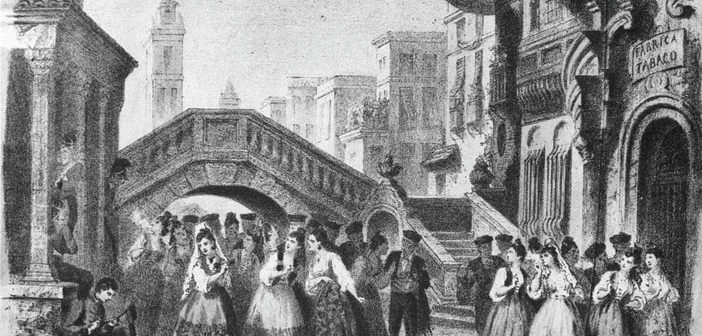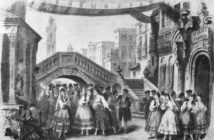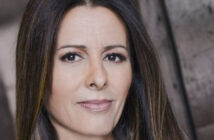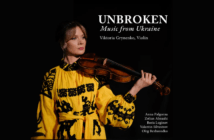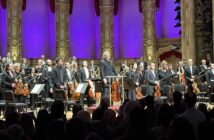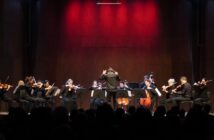
This page is also available in / Cette page est également disponible en:
![]() Francais (French)
Francais (French)
La Scena Musicale is pleased to present EXCERPTS from Conducting Opera: Where Theater Meets Music, a detailed discussion of operas from Mozart to Richard Strauss from the perspective of a conductor with a lifetime of experience. Joseph Rescigno, former artistic director of the Orchestre Métropolitain, approaches these masterworks with the aim of realizing what opera can uniquely achieve: a fusion of music and drama resulting in a whole that is greater than the sum of its parts.
Bel canto operas and pitch
Once we have our apt dramatic interpretation along with our tasteful and stylistically appropriate vocal fireworks ready to go, we must sometimes consider an issue that hangs over many of the bel canto operas in a manner that we do not encounter in other corners of the repertory. It arises at the intersection of our much-prized high notes and the limits of the human vocal cords and eardrums. We face pitch issues because some numbers were originally in higher keys that were lowered a long time ago, probably to allow for interpolated high notes. Recent fashion requires more faithful productions. So, there is a trend toward restoring the original key of some numbers.
 There are trade-offs in raising pitch, however, because we may safely assume that today’s orchestra is tuning a semitone or even a whole tone higher than the orchestras did when the bel canto works were first performed. Pitch is something that creeps up gradually and reflects a bias toward brighter sound among instrumentalists, until singers and their producers have to draw a line in the sand. The Baroque specialists of our time finally chose simply to tune the orchestra down.
There are trade-offs in raising pitch, however, because we may safely assume that today’s orchestra is tuning a semitone or even a whole tone higher than the orchestras did when the bel canto works were first performed. Pitch is something that creeps up gradually and reflects a bias toward brighter sound among instrumentalists, until singers and their producers have to draw a line in the sand. The Baroque specialists of our time finally chose simply to tune the orchestra down.
Today, most orchestras in North America tune to an A that equals 440 Hz, and in music from Mozart on, we probably will not see tuning down any time soon. So certain interpolated high notes, taken into the original, higher key, are simply ill advised. A sustained E-flat when well sung is thrilling, and it is already higher than it was in the first half of the nineteenth century. But if we restore the original key of Lucia’s mad scene, for example, and follow tradition, that E-flat becomes a loud high F sustained for several measures. Even if well produced, in today’s tuning this is almost painful to most of the music-loving public in this kind of music. Note that this is a matter of context. Such stratospheric high notes in a jazz trumpet may be exciting, but would be harsh and wrong in bel canto.
So the decision to restore the original key is not a simple one. Let it be said, however, that if planned embellishments require transposing down, they may be prime candidates for modification anyway. In a work like Lucia, we often hear the same variations from the 1940s and 1950s. While there is nothing intrinsically wrong with these variations, they can seem old fashioned, so there is good reason to reconsider them. Many performers forget that the embellishments were highly individual. For me, it is always a joy to fashion cadenzas and variations to suit a singer’s strengths. Such strengths might be breath versus agility, higher high notes versus better low notes, and so on. They all suggest different variations and embellishments.
Alas, the popularity and familiarity of some of these operas makes the decision to present new embellishments less than simple. When the audience expects certain variations or high notes and they are eliminated, the conductor can perhaps let any grumbling roll off his back. While I do sympathize with the singer considering such trade-offs, my own recommendation will always be to concern ourselves, above all, with delivering the best performance possible.
Carmen: the cigarette factory
The evocative, descriptive passage for the chorus of cigarette factory workers in Act I is often played faster than the metronome indication of 60 dotted quarter notes a minute. There is no dramatic or musical reason for this change. Dramatically, the tempo Bizet indicates seems to depict a group of women returning from a break in factory work on a hot afternoon in Seville perfectly – languid and seductive. At least some of the women may be assumed to have been sleeping during this break. These women are well aware that a group of men is observing them closely. So they should be strolling, far more interested in teasing the men (easy marks, admittedly) than in returning to work.
Staging frequently contributes to confusion about this scene. The women are almost invariably seen emerging from the factory. But the original dialogue makes clear that the men (a lot of them) are awaiting the return of the women to work. When Zuniga asks whether women work in the factory, José tells him, “Oui, mon lieutenant. Elles n’y sont pas maintenant; tout à l’heure, après leur dîner, elles vont revenir. Et je vous réponds qu’alors il y aura du monde pour les voir passer.” Alas, even when Carmen’s dialogues are performed, these words are virtually always cut.
Notably, the door to the factory is often elevated so that the chorus descends some stairs. Yes, the original stage directions use the verb descendre at andantino (in Oeser and Choudens [first edition]), but this is mistranslated in the Kalmus reprint and Schirmer vocal score available for download. Here, descendre does not necessarily have to involve literally moving downward or coming from above. This use of descendre is equivalent to English’s “walk down [the street],” definitely with a connotation of rambling along the stage in a relatively unhurried manner. So descendre does not mean descending and certainly does not mean that the women are leaving the factory. (It is a small matter perhaps but note that Carmen herself comes onto the scene last. This, too, is more consistent with ending a work break. We would hardly expect Carmen to be the last to leave her work station.)
The indicated tempo is also consistent with the angelic sound of an all-female chorus and the women’s poetic words about lovers’ sweet talk, raptures, and vows that are smoke mounting toward the sky. Thus, there is nothing happening onstage that compels a faster tempo, and the choice of many to zip through this chorus is less interesting dramatically than the speed Bizet indicates.
Selections from “My favorite things”
 Le Nozze di Figaro: The pedal point in the double basses at about halfway through the Act II finale and particularly the f in the basses just before the melody repeats (m. 453). They are unexpected at that moment, and so apt dramatically as they underline the opposite sentiment in the line the Count is about to sing.
Le Nozze di Figaro: The pedal point in the double basses at about halfway through the Act II finale and particularly the f in the basses just before the melody repeats (m. 453). They are unexpected at that moment, and so apt dramatically as they underline the opposite sentiment in the line the Count is about to sing.
Don Giovanni: The lyricism in the trumpet of the Act II sextet. It foretells what a composer like Richard Strauss would do in Der Rosenkavalier over a century later.
Die Zauberflöte: The Act I quintet, especially the simple, yet magical, descending staccato scales in the oboes, bassoons, and violins at “Silberglökchen, Zauberflöten.”
Il barbiere di Siviglia: The last part of the Almaviva-Figaro duet in Act I. While Almaviva rhapsodizes on winning Rosina, his melody is accompanied with a patter song in which Figaro looks forward to lining his pockets with Almaviva’s payment. Soon the two are singing in delightful counterpoint and progress to an exhilarating conclusion with each singing the same words, “di me stesso maggior mi fa.” There is an added moment of spice when the two voices come together dissonantly, which further contrasts the characters’ nobler and more mundane goals.
I Capuleti e i Montecchi: Arguably, the dynamic high point of the opera is the conclusion of the Act II duet between Romeo and Tebaldo. Without doubt however, the emotional high point – and my favorite moment – is the final scene. Both Romeo’s part and his duet with Giulietta after she wakes capture the lyrical essence of this love story.
Norma: The final section. One can almost hear the end of Tristan und Isolde coming.
Lucia di Lammermoor: Act III’s “Al fin’ son tua, al fin sei mio.” This quiet phrase in the middle of the vocal virtuosity of the mad scene captures Lucia’s fragility. For me, this is the opera’s emotional high point. In an era in which mad scenes were common, Lucia’s stands out for its sincerity and effectiveness.
Rigoletto: The final duet, especially the flute arpeggios on Gilda’s “Lassù in cielo vicina alla madre” and then those of the violins on the repeat. A lesser composer would have used the harp, perhaps, or repeated the flute effect. These arpeggios can be magical, especially with a Gilda who has good breath control and can sing long lines, which allows me to slow slightly on the repeat. This, the emotional high point of the opera for me, could not be more perfectly scored.
La Traviata: The largo of the Act II finale. It paints all of the characters and the Parisian atmosphere in one great ensemble.
Aida: The opening of Act III. One can practically feel the Nile’s current.
Otello: The Otello-Desdemona duet at the end of Act I. In this ecstatic duet, the two singers never sing together until the last note, which is part of what makes this note so wonderful.
Falstaff: The final fugue, an invigorating piece and one of the most thrilling conclusions to any opera. It also looks back to Bach after the highly romantic Otello. In some measure, we are reminded of the way in which Richard Strauss took inspiration from Mozart for his Der Rosenkavalier.
Der fliegende Holländer: The Dutchman’s Act I aria. This mighty aria completely and thrillingly encapsulates the tormented title character’s back story as well as his despair.
Die Walküre: The melody in the orchestral interlude after Wotan’s “der freier als ich, der Gott” in the final scene. This is perhaps my favorite moment in all of music.
Tristan und Isolde: The opening of Act III. The opening motive in the violins becomes the ascent in thirds over four measures. It captures loneliness and longing better than almost anything in music. Then, the long English horn solo depicts hopelessness and yearning perfectly.
On a lighter note, I do admit to feeling tickled by the hint of Wotan’s Farewell that begins 15 measures from the end of this long and so-serious opera (in the flute, oboe, and English horn). It reminds us that Wagner interrupted his work on the Ring to compose Tristan and needed to get back to that.
Faust: Méphistophélès’s “Ô nuit, étends sur eux ton ombre!” in Act III, with its foretaste of later French music like that of Gustave Charpentier and Gabriel Fauré. In particular, the harp and tremolo violins give atmospheric accompaniment to the horn. In addition, the orchestra is carrying the melody rather than the singer, a more modern approach than we see in most of this opera.
Carmen: The ever more insistent repetition of the fate motive in the final duet. This sums up the whole opera emotionally and musically.
Samson et Dalila: The first measures of the opera: The bassoons play a single note; then the horns play the interval of a third; and the flutes play a minor triad followed by a minor triad in second inversion in the clarinets and bassoons. This sets the stage for the B-minor mood of the next section. The build-up in intensity reminds me of the opening of Das Rheingold where the great river begins in the horns and expands through harmonic and motivic repetition. In this instance, it is the story of the Hebrews that is described.
La Bohème: In the last act, the rallentando two measures before [21] and transition into the next section. They epitomize the lovers’ yearning and, for me, serve as the emotional high point of this opera. I confess to emphasizing this rallentando – and the pp and dolcissimo at [21] – with all my heart.
Tosca: The “Te Deum” that closes Act I – with a great Scarpia. This is the finest scene Puccini ever wrote for a baritone.
Madama Butterfly: The love duet of Act I, in particular the part the oboe plays when it doubles Butterfly on “bambino.” The effect is spine-tingling.
Salome: Salome’s final aria. One highly dissonant chord on the third beat of the bar before [361] sums up the entire work and serves as the emotional high point for me.
Elektra: The final bars of the Elektra-Klytämnestra duet. The high C for Elektra on the word “Jauchzt” and the resolution on a high B flat bring us as close to true catharsis as we have in opera.
Der Rosenkavalier: The waltzes at Ochs’s exit in Act III. They epitomize Vienna, and nothing so evokes the city even to this day. Although the opera is set before the Viennese waltz flowered, Richard Strauss shows himself to be the master of this form as much as Johann.
Ariadne auf Naxos: The conclusion of the opera. It raises this chamber opera to the grandest level. In a loving tribute to Richard Wagner, the orchestra seems like an ensemble of one hundred.
Published by the University of North Texas Press
Hardcover Price: US $29.95
Hardcover ISBN-13: 9781574417937, 336 pp.
This page is also available in / Cette page est également disponible en:
![]() Francais (French)
Francais (French)

